Having a pet cat in Japan can be a very different experience than having one in your home country. In this article, we address 8 of the most important things you should know about keeping a cat in Japan so you won’t be caught off guard. From pet insurance to pet deposits, average vet visit fees to seasonal pet care, a recommended read for future cat owners in Japan.
Table of Contents
- Bringing Your Cat to Japan is Possible
- Where to Get a Cat in Japan
- Most Apartments Don’t Allow Pets
- Keep Your Cat Indoors
- Cost of Keeping a Cat in Japan
- Vets can be Quite Expensive!
- Japan has Pet Insurance!
- Japan’s Four Seasons Affects Cats Too
1. Bringing Your Cat to Japan is Possible

Yes, in case you’re wondering, you can bring your cat to Japan with you. To bring your cat to Japan involves a lengthy and stressful process (according to those who have experienced it) called “Animal Import (動物の輸入 doubutsu no yunyu)” that is controlled by the Ministry of Agriculture, Forestry and Fisheries (MAFF)’s Animal Quarantine Service (動物検疫所 doubutsu keneki syo).
We’ve prepared an article on all the important things you need to know. You can read it here:
Bringing Your Cat to Japan: Important Things to Consider and Import Procedure
Writer's Pick
2. How to Get a Cat in Japan
Looking to get a cat in Japan? You have many options depending on what type of cat you are looking for, and your budget.
Pet Shop
Pet shops can be easily found throughout Japan. Your biggest concern would be the hefty price. The average price for kittens at pet shops is 100,000 yen to 300,000 yen. Prices of exotic and popular breeds can go up to 600,000 yen or 1 million and more The lowest price you can get for a kitten is no less than 50,000 yen.
Most pet shops include veterinary costs like vaccinations and other miscellaneous costs into the price. Ask for a price breakdown before completing your purchase for an informed decision.
INFO:
-
Pet shops are free to set their own prices so you may find prices differ greatly from one shop to another for the same breed.
-
Prices are usually determined by 3 factors; purchase price (how much the pet shop paid for the cat), profit cut, and market value (supply and demand).
-
Other factors that affect price are the kitten’s “quality and breed standard”. For example, fur length, colour rarity, eye colour, size, etc. In the case of a Scottish Folds, one with “folded” ears will be priced higher than one with no fold or less/partly folded ears.
-
Generally, the older the kitten gets (more than 4 months old), the lower the price will drop as the pet shop attempts to reclaim loss.
※ Neko-chan Ponpo, “子猫の値段っていくら?人気猫種10種類の平均価格と個体差”
Adoption Shelter・Rescue-Cat Cafe
Rescue-cat Cafes? What’s that?
Find the answer in our All About Cat Cafes in Japan article.
Or, skip to the section What is a Rescue-Cat Cafe? from the article.
There are countless excellent reasons you should opt for adoption:
-
Save a cat by giving it a home
-
Better find what you are looking for when it comes to personality and cat’s needs
-
Costs a lot less at an average of 20,000 yen ~ 60,000 yen
-
Support cat shelters, cat organisations, and other cat NPOs so they can help other less fortunate cats
-
Free up space at the shelter / rescue-cat cafe for another cat in need
INFO:
-
Generally cats at shelters / rescue-cat cafes have been there awhile, which means their character/personality/health issues are well known to their caretaker. What this means for you is finding a cat whose temperament suits yours, and knowing the cat’s existing health conditions (if any).
-
Technically the cat is free, and what you are paying is the cost of the cat’s medical expenses like spaying, vaccines, and check-ups.
-
Adult and senior cats are available as well. Older cats are generally slower and lazier than kittens which means less hyperactivity and more chill.
-
A trial period (usually 2 weeks) before adoption is required to see if the cat is able to adjust to you, and vice versa.
-
Fostering is also an option with these places. You can nurture kittens and cats and give them a temporary home until they are adopted. Or, if you’ve fallen in love, be their forever home. Responsibilities may include bringing them to cat adoption fairs.
※ Anicom Insurance, Inc., “猫を里親でお迎えしたときの費用はいくら?動物病院へは行ったほうがいいの?”
3. Most Apartments Don’t Allow Pets

This is not an issue if you own property, but chances are if you came to Japan for work or studies, you’ll be renting an apartment. And that is the biggest obstacle for many foreign nationals from owning a pet. As if finding (and affording) a place spacious enough to comfortably live with a cat isn’t hard enough, you now need to add in the extra factor of finding a 「Pet OK 」place. By having a pet (or planning to get one), you are also limiting your choices of apartment by a lot.
Pet-Friendly Apartments are More Expensive
Apartments that allow pets are generally more expensive because of:
Higher Moving-In Fees
An additional 1~2 months of security deposit will be charged by pet-friendly apartments. Some apartments that allow multiple pets, though this is rare, may charge per pet. Check the details of your contract carefully before signing.
Higher Moving-Out Fees
Whenever you move out of an apartment (no pet), you will be charged for cleaning, sanitization, and any restoration of damages. This will usually be deducted from your deposit, the remainder sum will be returned to you.
This is the same case for pet-friendly apartments but the cleaning and sanitising will be more thorough to get rid of fur, unpleasant odours, bacteria. Plus, as a natural consequence of keeping a cat that bites and scratches, restoring the apartment to its original condition will cost more than you expect.
An important thing to be wary of is not to get cheated. There are many cases where landlords will overcharge tenants for damages that should not be covered like regular wear-and-tear.
Important Words to Know for Pet-Friendly Apartment Hunting
|
Pets Not Allowed |
Pets Allowed |
|
ペット禁止 petto kinshi |
ペットOK |
|
ペット不可 petto fuka |
ペット可 petto ka |
You may also come across 「相談可 soudan ka」which means negotiable.
NOTE: Always clarify what kind of pet is allowed. Do not assume all types of pets are permitted, as some places only allow dogs, some only cats, etc.
4. Keep Your Cat Indoors
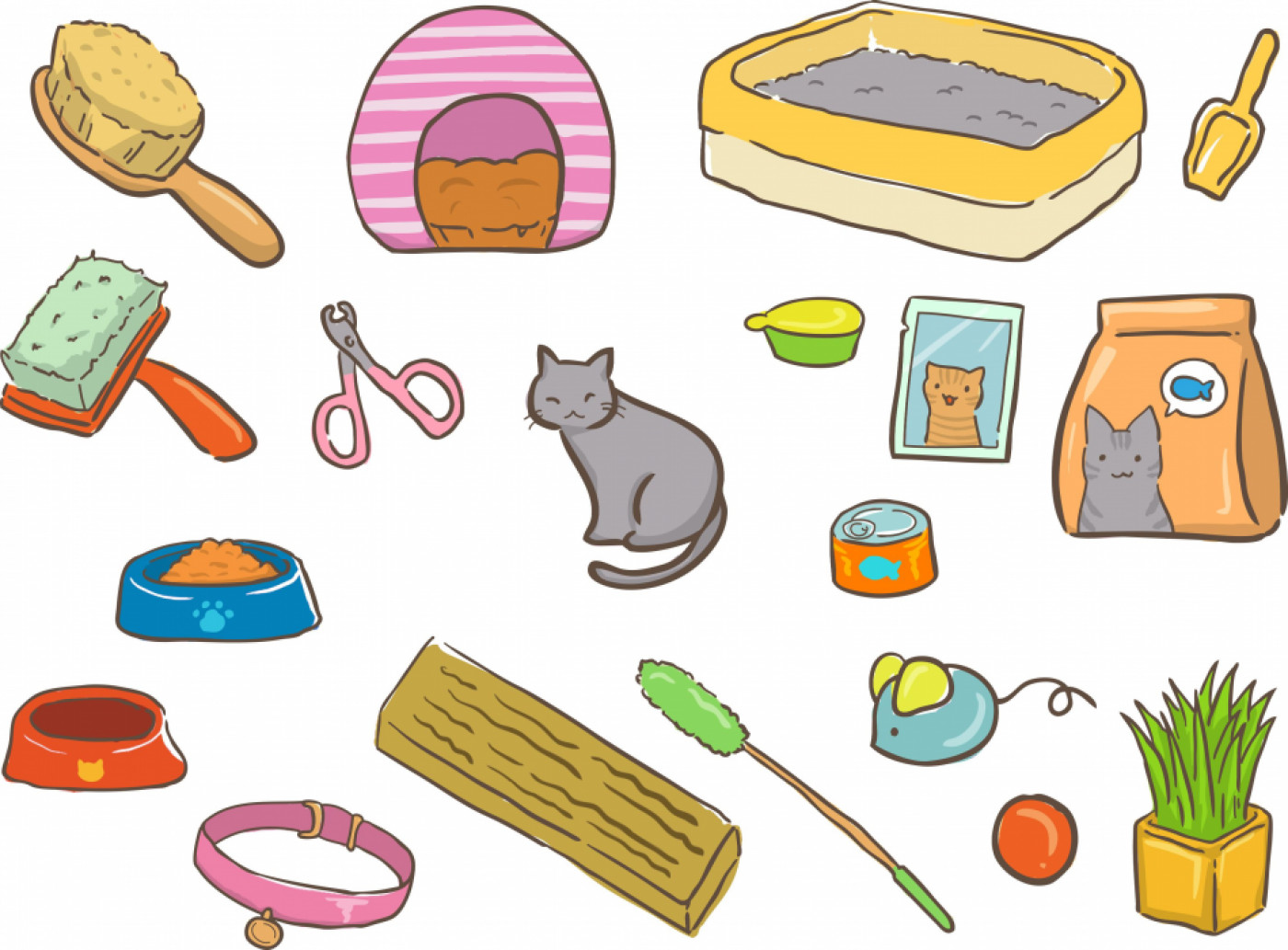
Although you may see the occasional pet cat wandering the streets, most pet cats are kept indoors. In fact, many municipality offices request that residents keep their pet cats indoors for their own good - safety, disease prevention, less stress, getting lost, traffic accidents, etc.
As such, aside from cat-proofing your house, there are a few things you need to do in preparation for your cat’s arrival.
Things to Prepare for Your Cat
Essentials (first day~)
- Cat food
- Cat bowls - for food and water
- Litter box and litter
- Scratching post / board
- Bed
- Pet carrier
- Toy(s)
Other Things to Get (over time)
- Cat tower - or something they can climb, tall cage also works well
- Places to hide - cardboard box, shelve holes, cupboard space, under the bed
- More toys
- Cat grass, treats, wet food, supplements - for a balanced diet
- Nail clippers
- Cat shampoo - cats are very clean but occasional baths are good for them
- Ear cleaning solution and cotton balls
- Brush - regular brushing is necessary for long-haired cats
Cat-Proof Your Apartment - Pay Special Attention to These
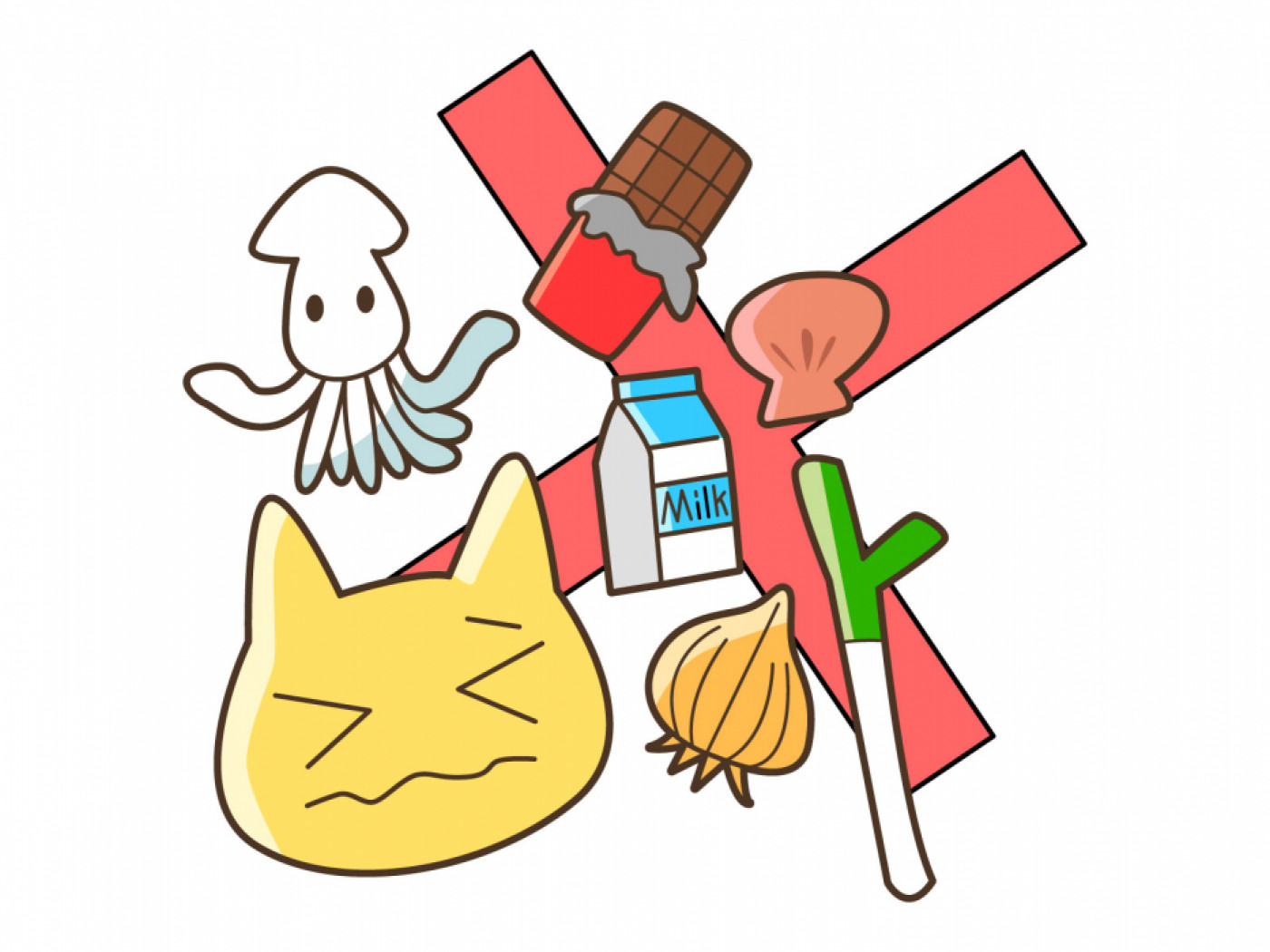
Kitchen
- Keep sharp objects stowed away.
- Secure rubbish bins from trash-digging cats.
- Be careful when cooking.
- Keep countertops clear when not using.
Cables
- Beware of electrocution from biting cords.
- Use cord hider, cable protector, or keep cables out of sight.
Food and Plants
- Some plants and human food are poisonous to cats.
Escape
- Make sure windows and doors are firmly shut.
- Cats panicking and getting lost after jumping out a window or out the door during earthquakes are a common issue.
5. Cost of Keeping a Cat in Japan
After accommodations, the next most important thing to ask is “How much will it cost?” And we’re not talking short term here; keeping a cat is a long term investment that spans the cat’s entire lifespan.
Average Lifespan of Cats in Japan
According to the Japan Pet Food Association’s Reiwa 3rd Year (2021) National Dog & Cat Rearing Fact Finding Survey’s Results, the average life expectancy of cats overall is 15.66 years.
For indoor-only cats, the average life expectancy is 16.22 years.
For outdoor cats / cats allowed outdoors, the average life expectancy is 13.75 years.
※ Japan Pet Food Association, “令和3年(2021年)全国犬猫飼育実態調査 結果”
Now that you can gauge how long your cat is going to live for, let’s have a look at the daily living costs.
Breakdown of How Much It Costs to Keep a Cat in Japan
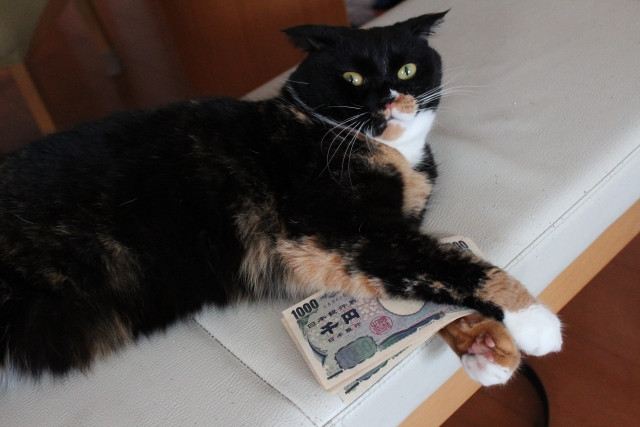
This breakdown excludes the cost of purchasing / adopting the cat. Plus, vaccinations are usually included in the purchase / adoption price. If you adopt a cat from a neighbour or bring in a stray, of course you’ll need to bring it to a vet and get its vaccines done.
NOTE: Prices below are the average minimum amount to spend.
Initial Cost (Yen)
- Pet Carrier: 3,000~
- Litter Box: 1,000~
- Food Bowls: 200~
- Scratch Post: 1,000~
- Cat Tower: 10,000~
- Brush: 600~
- Shampoo: 300~
- Bed: 500~
- Spaying: 15,000~30,000
NOTE: Some wards / organisations provide subsidies for spaying which can reduce the cost of spaying to around 5,000 yen.
Annual Basic Living Costs (Yen)
- Food: 50,000~
- Litter, Toys, Scratch Post: 12,000~
- Utilities: 15,000~
- Misc. Expenses (Yen)
- Annual Vaccine: 3,000~5,000
- Annual Pet Insurance: 8,000~
- Cage: 5,000~ / 1-off payment
- Pet Hotel / Boarding: 3,000~ / day
- Grooming at Salon: 5,000~ / time
NOTE: Above prices are for reference only. Inflation, availability, brand, personal choice, and other factors may affect prices.
※ au Insurance Co. Ltd., “猫を飼うのに生涯かかる費用とは?初期費用から医療費まで紹介” ※ Anicom Insurance, Inc., “猫を飼うとかかるお金まとめ!用意するべきもの完全ガイド!” ※ Kakaku.com insurance, Inc., “ペット保険 比較” ※ Peco, “猫のペットホテルの料金相場はどのくらい? 割引などはあるの?” ※ Pet Pet Life, “猫のトリミングの料金はだいたいいくらするの?自分でやった方が経済的?”
6. Vets can be quite expensive!
Your pet cat will inevitably get sick or injured in its long lifetime with you, which means visits to the vet. So how much do vet expenses cost?
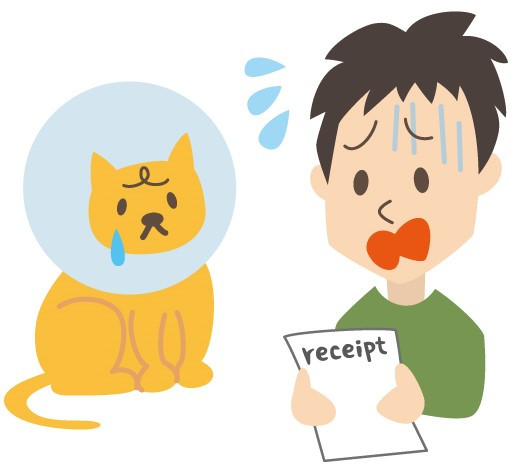
How much do vet visits cost in Japan?
According to the Japan Veterinary Medical Association’s Domestic Animals (Dogs / Cats) Awareness Survey carried out in 2015, families with cats spend an average of 6,991 yen a month on veterinary expenses. Notably, the average amount increased to 7,991 yen a month for senior cats aged 13 and above.
Maximum Cost of Treatment to Expect
In the same survey, families were asked “What is the maximum total cost of treatment for 1 instance of illness so far?”
The answer was an average maximum total cost of 54,197 yen. To note, the average maximum total cost increased to 65,208 yen for cats 13 years old and above.
Diseases & Maladies Cats are Prone to Get
Based on these results, on the off chance you get a particularly sickly cat that gets sick every month, you could be spending around 84,000 yen a year just on medical expenses alone. For that matter, prices may vary from veterinary clinic to clinic so finding an affordable and also good clinic is especially important.
Further things to note, cats are more prone to certain health issues like kidney problems, diabetes, urinary problems, gingivitis/gum problems, ingestion of foreign bodies, and conjunctivitis.
If surgery is required, you’re looking at a bill from 60,000 yen (gingivitis/gum problems) to 200,000 yen (bone fractures)- which is where pet insurance comes in handy. Having emergency savings set aside doesn’t hurt too.
※ au Insurance Co. Ltd., “猫を飼うのに生涯かかる費用とは?初期費用から医療費まで紹介” ※ SBI Holdings Inc. , “猫の治療費はどれくらいかかる?高額負担に備えるには?” ※ Japan Veterinary Medical Association, “家庭飼育動物(犬・猫)の飼育者意識調査 調査結果(平成27年度)”
7. Japan has pet insurance!
First things first, the reason that medical treatment for animals seems so much more expensive than our own is because of insurance, or the lack thereof. In Japan, everyone is required to be covered by health insurance, whether it’s company or national insurance. And with it, we only need to cover 30% of our treatment expenses. Unfortunately, there’s no such thing for animals which is why the 100% expenses seem like a lot.
Luckily, there are private pet insurance corporations that can help you with that!
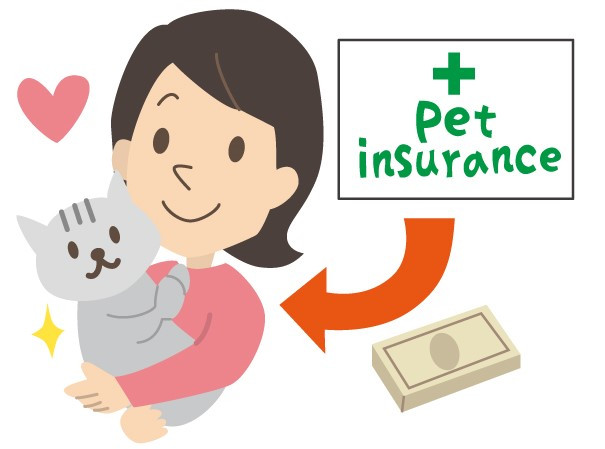
How does pet insurance in Japan work?
Pet insurance in Japan works similarly to private health insurance. Basically, you pay a (typically) monthly premium. In return, whenever your pet requires medical treatment you can have insurance cover the whole or part of the treatment costs, depending on your insurance plan.
Aside from medical treatment expenses, there are pet insurances that cover funeral expenses, and even pet third party injury liability for cases like when your dog bites someone or your cat attacks someone.
Pet insurance differs a lot from insurance provider to provider so it is important to do your research on:
-
What do they cover?
-
What don’t they cover?
-
How much do they cover?
-
How much is the premium?
-
How to claim insurance? How long will it take?
-
Will the premium increase over the years following a pet's age?
-
Is continuation allowed when your pet reaches seniority?
-
How much is the annual maximum coverage?
-
How reputable is the insurance provider? Chance of bankruptcy?
8. Japan’s Four Seasons Affects Cats Too
Just like us, too hot and too cold is bad for cats and at times even fatal. For those who come from countries with relatively mild summers and winters, you may become worried about the changes your cat may be experiencing - lethargy, appetite loss, and other symptoms.
Summer Care
Heatstroke is a huge issue in Japan, thousands of people get hospitalised with heatstroke in Japan every year, in some cases even deaths are reported. Cats are known to be able to withstand heat, they love sunbathing and all, but even Japan’s summers can be fatal to cats.
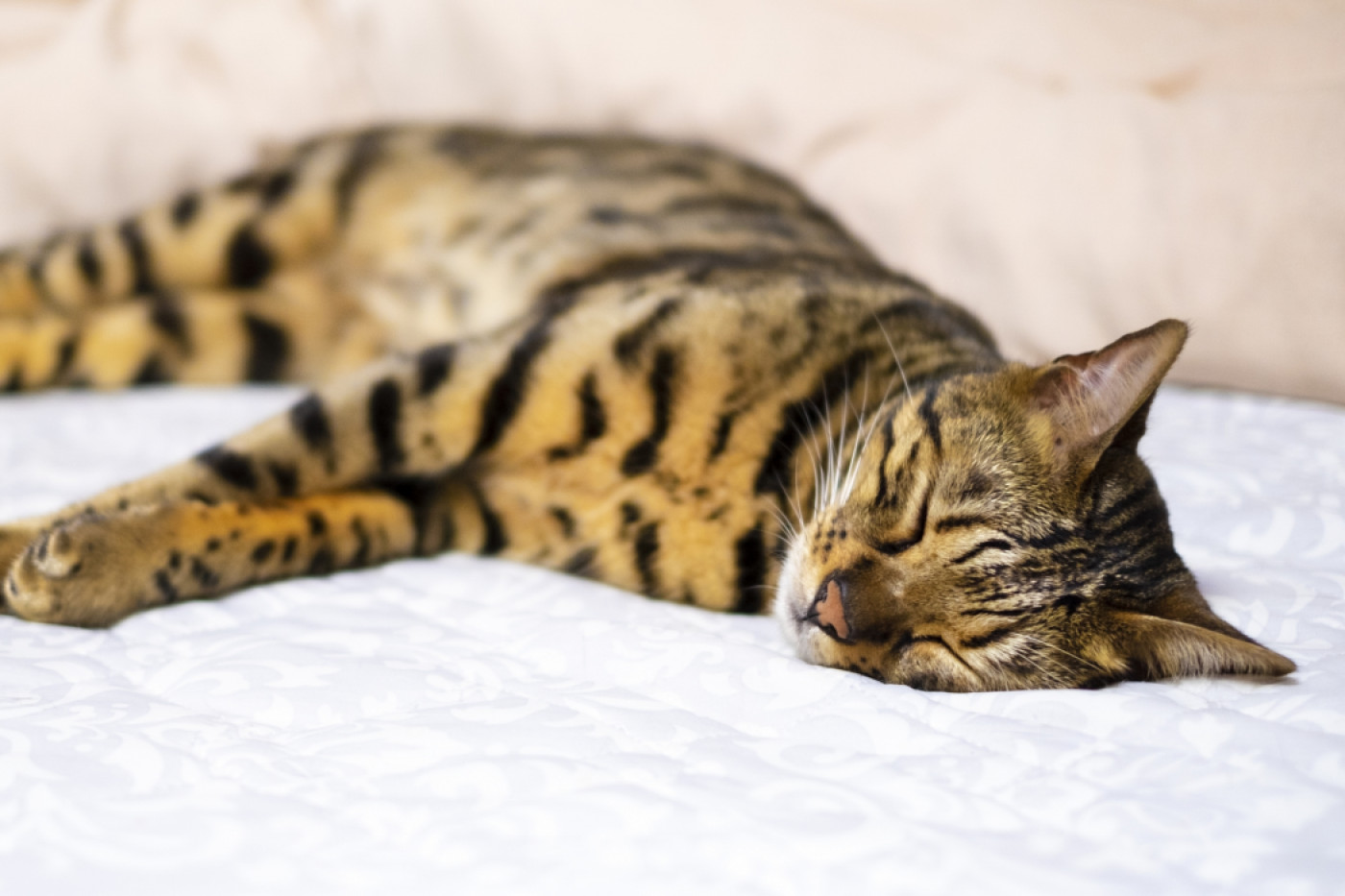
Keep the room at a comfortable 28℃.
Many people take for granted that heatstroke only happens outside or under direct sun. This is not true! Many cases of heat stroke actually occur indoors due to improper ventilation in an enclosed space.
Set the air conditioner timer to switch on for especially hot times during the day and aim to keep the indoor temperature around 28℃.
Prepare water at various spots around the house.
Cats are lazy creatures but more so when they are feeling lethargic from the heat. If water is too far away, he/she might just give up on drinking altogether. What you can do is prepare water spots all around the house, preferably in each room so your cat can have easy / near access to water at all times. You can also give ice cubes for them to lick.
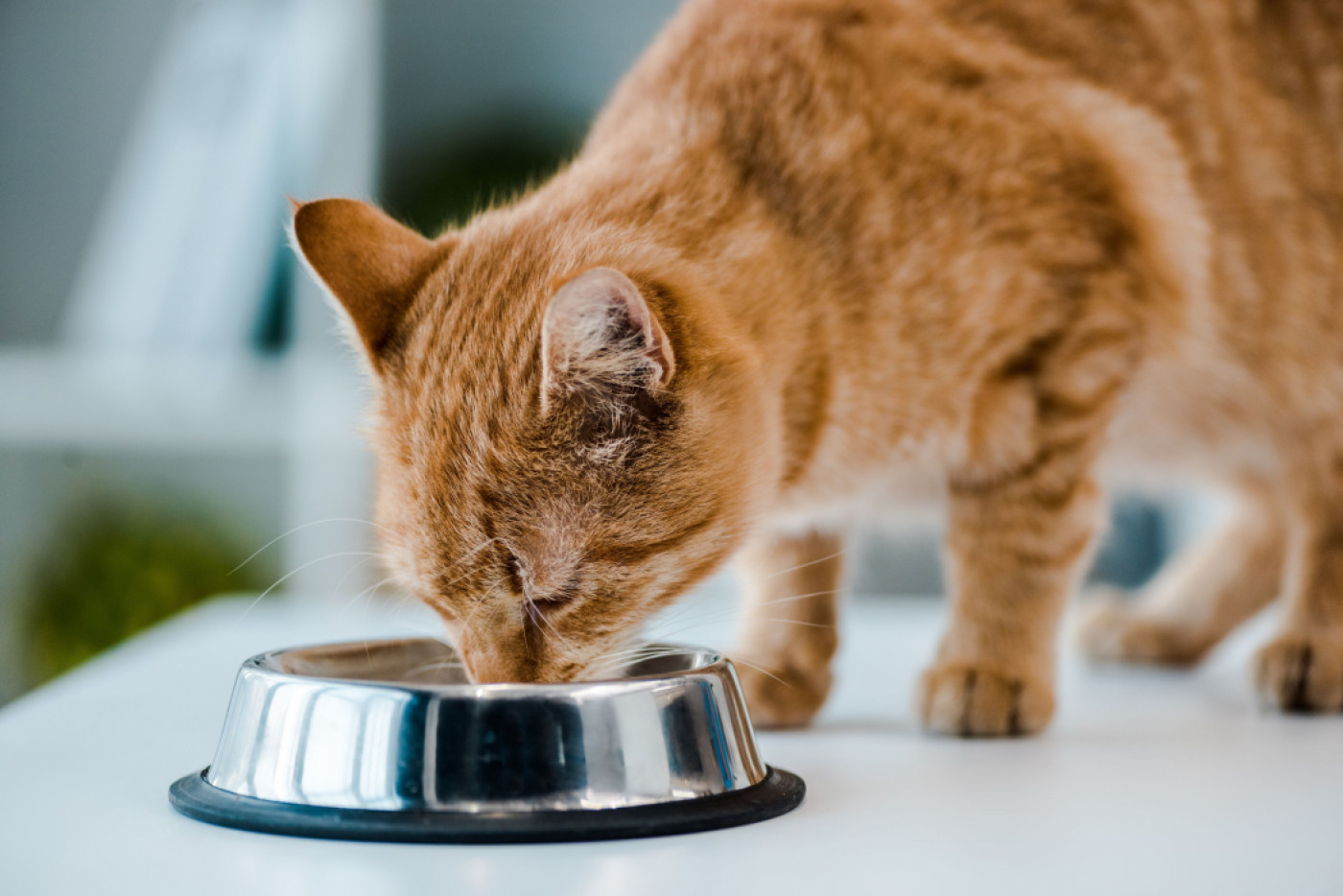
Loss of appetite.
Don’t be too worried if your cat is eating less during summer time. This is normal as he/she is feeling lethargic, and not moving much because it’s hot. Thus, less need to replenish energy. What you can do is try giving wet food to stimulate your cat’s appetite. Adding some water to the wet food will also help increase water intake.
Rainy season means extra brushing.
Humidity is a cat’s enemy. Cats are more likely to over groom and develop hairballs during Tsuyu (梅雨), Japan’s rainy season. The humidity makes their skin produce more sebum and tangles their fur making them develop skin sensitivity. What you can do is help brush your cat’s fur more often and control room humidity; perhaps get a dehumidifier and a fan or circulator to ventilate the room. This’ll also help prevent mould in your apartment.
Other Things to Note
-
Don’t leave food out the whole day. Clean up after eating time. Food, especially wet food, goes bad fast in summer.
-
Feed smaller portions of food. Your cat won’t eat as much as usual so it’ll be a waste of food.
-
Clean litter boxes more often. They smell bad faster and grow bacteria easier. Also, the litter will absorb humidity and clump together.
-
Play with your cats. Make them move more. It’ll improve their mood and appetite.
-
Get a cooling mat to keep your kitty cool.
Winter Care
Most cats dislike the cold, unless you have a breed that has thick fur and comes from colder regions. Loafing, curling into a ball, and hiding in a corner or under something are some indications that your cat is really cold. If you have a few cats, they’ll be huddling together in a cuddle pile for warmth. Cute! But you should still do something so they don’t catch a cold.
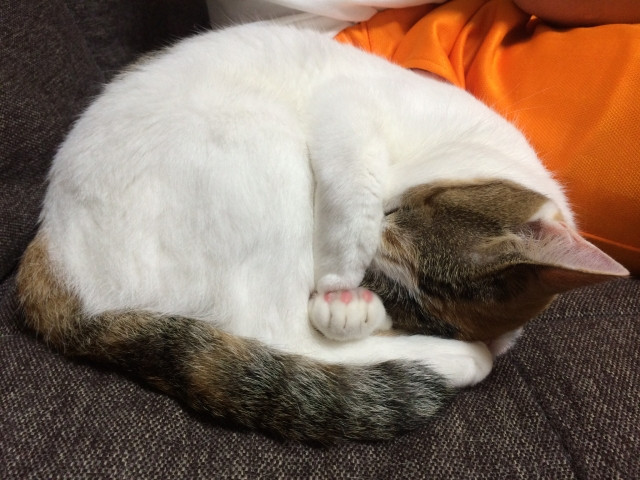
Keep the room at a comfortable 28℃.
A repeat from above but this time you’ll be using the heater. In case you didn’t know, air conditioners in Japan come equipped with 3 functions; cool / air conditioning (冷房 reibou), dry (除湿 jyoshitsu), and heating (暖房 danbou). Likewise with air conditioning, you can set a timer for heating so you don’t have to keep it on the whole day - which is not recommended anyway because it may become too hot and dry.
Keep the room moist.
Turning the heater on will keep your room warm but it will also make the already dry winter air dryer. This is bad for your cats because not only will their skin become uncomfortably irritatingly dry, they may also get a dry bad throat. For that reason, you should not just get a humidifier but also prepare several water spots for easy access.
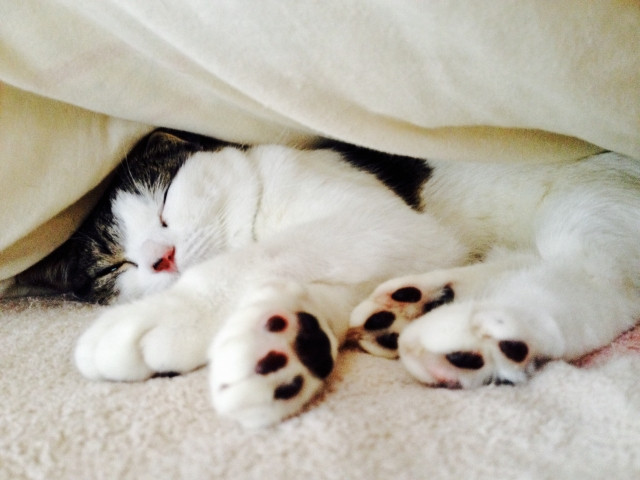
Prepare places to hide and snuggle.
Cold cat is a snuggly cat. Basket with warm blankets, cardboard box with towels, or just a blanket pile on the bed are all good options. Your cat will curl up, maybe knead some bread, and take a cosy nap. If you’re lucky, maybe they'll do these right against you - stealing your body heat.
Warm water, warm toilet.
Instead of ice cold water, your cat would prefer their water a little warmer in winter. Also, try moving the litter box somewhere warmer. In winters, there’s an increased risk of cats developing kidney stones, urinary tract infection, and dehydration because they don’t want to drink water and don’t want to go to the toilet. Why? Because it’s too cold…

Increased appetite.
Cats, like most animals, have an increased appetite when the weather is cold. Be careful not to overfeed your cat or it’ll get fat!
Other Things to Note
-
Beware of low degree burns especially if you have a kotatsu, hot water bottle, electric blanket, or stove heater. Cats don’t move much after settling down and are prone to burning themselves accidentally.
-
Warm mats, opposite of cool mats, are available to buy.
-
Or put a hot water bottle under a blanket, mat or cat bed. No direct contact with cat to prevent burns.
Shedding Season
Shedding season for cats in Japan occurs twice a year in spring and autumn. Around March in spring is when they start shedding their winter coat, and the second round around October and September in autumn when they start growing in their winter coats. What you should do is give your cat a bath and brush them regularly to get rid of the excess hairs. It’ll help reduce hair from going everywhere in your home and also prevent hairballs in cats.
Instead of throwing all the hair away, you can make hats with them!
Loved this article? You'll surely love our other cat articles too! Find them all here:
Cats in Japan, Find All You Need to Know About Japan’s Cats in One Page





















.jpg)













